|
|
 |
|
|
Poland - First To Fight
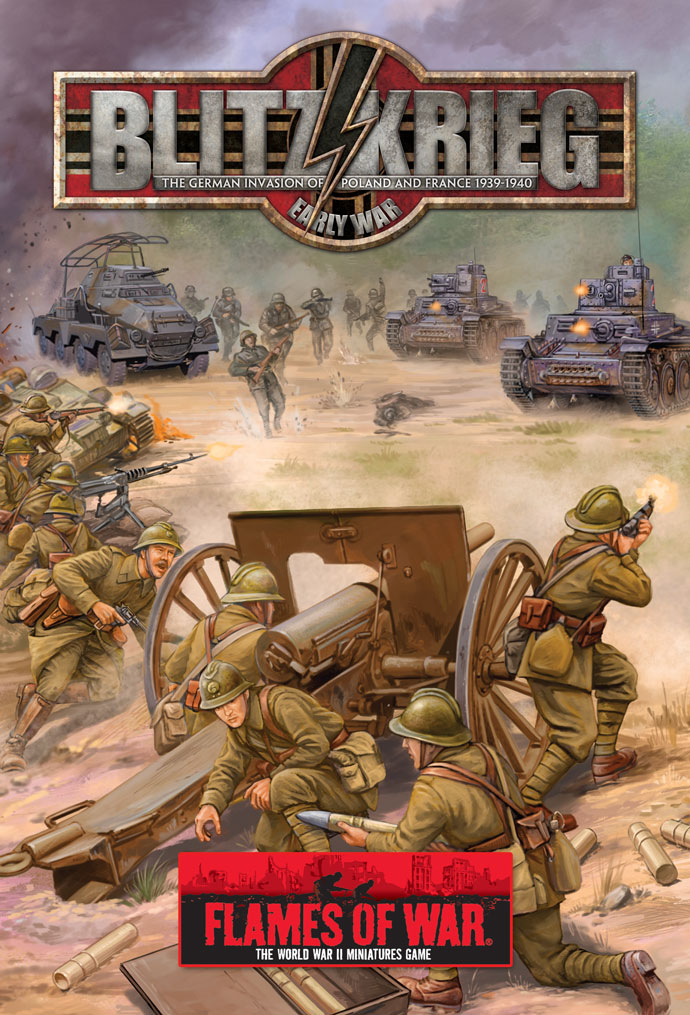 |
Poland - First To Fight
The German Invasion Of Poland, September 1939.
Having secured Czechoslovakia in March 1939, Hitler demanded that Poland hand over the port city of Danzig in August. Having seen what happened to Czechoslovakia when they complied with Hitler’s initial demands, Poland was in no mood to comply.
The port of Danzig was Poland’s only access to the Baltic Sea. Communications between Danzig and the bulk of Poland were along the narrow Danzig Corridor through Pomerania (Pomorze in Polish). While Danzig’s port was essential for the survival of the new Polish state, the corridor split East Prussia from the rest of Germany.
When Germany delivered its final ultimatum on 29 August 1939, the Polish
government knew that without the help of Britain and France they had no
chance of defeating a German invasion. Outnumbered two to one in
soldiers and ten to one in tanks and aircraft, their only hope lay in
holding on long enough for France and Britain to intervene.
|
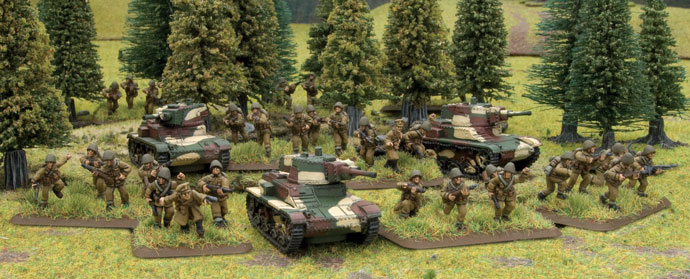 |
The Poles had prepared for the coming storm as best they could. Poland’s borders were defended by six armies named for the areas they defended: the Modlin, Pomorze, Poznań, Łódź, Kraków, and Carpathian Armies, with the Narew Group covering Eastern Prussia. These armies were fully mobilised, although reserve units were still forming. Trenches were dug, barbed wire laid, and artillery fire surveyed, the air force dispersed its aircraft to secret secondary airfields, and the navy set sail for Britain, anticipating the loss of Danzig.
The defence of Poland began at 0445 hr on 1 September 1939 when German troops crossed the border to carry
out their invasion plan Case White. The plan was a classic German battle of annihilation with converging thrusts on Warsaw from the north and the south, trapping the bulk of the Polish Army and capturing the capital in one fell swoop. The first task, which fell to the Fourth Army, was to reunite East Prussia with the body of Germany by cutting the Danzig Corridor. With this done, the united Third and Fourth Armies would thrust towards Warsaw from the north. At the same time the Eighth and Tenth Armies thrust towards Warsaw from the south. Fourteenth Army would cover their flanks to the south and east and capture Poland’s industrial south around Kraków.
|
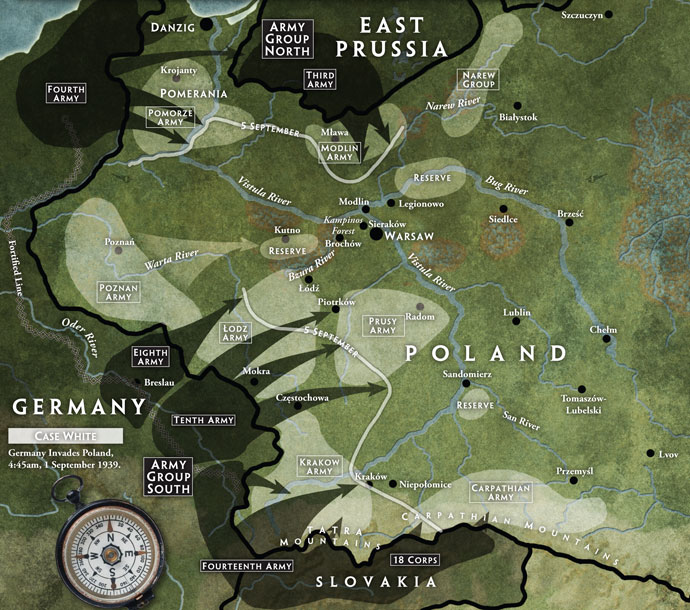 |
In the north Poland’s strategy was to lightly garrison the Danzig Corridor to stop the Germans grabbing it without a war, but to withdraw the garrison when the Germans attacked.
|
 |
Poland’s Pomorska Cavalry Brigade it launched the
first cavalry charge of the war to cover this withdrawal against the
attack by Guderian’s 19th Armoured Corps of two Panzer and one motorised
divisions, the leading element of the Fourth Army. The 18th Uhlan
(Lancer) Regiment was ordered to charge the leading elements of the
German 20th Motorised Infantry Division near Krojanty to allow the
Polish infantry to withdraw. The charge threw the Germans back in
disarray causing panic at all levels. Unfortunately for the cavalry, a
German armoured car patrol turned up and machine-gunned the Poles,
throwing them back in turn. When a war correspondent later saw the
battlefield, now occupied by a German tank unit, littered with dead
horses and cavalrymen, his news report started the myth of Polish
cavalry charging German tanks.
|
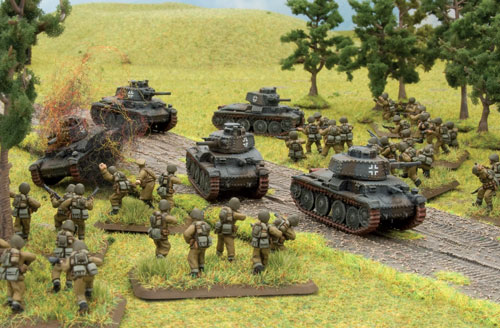 |
Germany’s Third Army had perhaps the hardest
task—attacking the Polish defences around Mława. Supported by the Kempf
Panzer Division, they made slow progress losing nearly half of their
tanks on the first day. The general in charge declared that ‘An attack
here is hopeless’.
In the south the Poles also had some success in
holding up the German advance. Tenth Army attacked the ŁódźArmy with
Hoepner’s 16th Armoured Corps of two panzer divisions and three further
light divisions (a cross between a weak Panzer division and a
reconnaissance brigade).
|
The German 4th Panzer Division faced the Wołyńska Cavalry Brigade at Mokra. Here, with just 18 anti-tank guns, 16 old artillery pieces, and a dozen tankettes, the cavalry faced nearly 400 tanks. With the aid of an armoured train, the Wołyńska Cavalry Brigade held their positions throughout the day and delayed the German advance on the next day until forced to retreat when the 1st Panzer Division and two infantry divisions forced back the Polish 7th Division on its southern flank. The Germans lost 76 tanks in the battle. Meanwhile, the Fourteenth Army with two Panzer and one light divisions attacked towards Kraków finding progress difficult against a stout defence by the 10th Mechanised Cavalry Brigade.
|
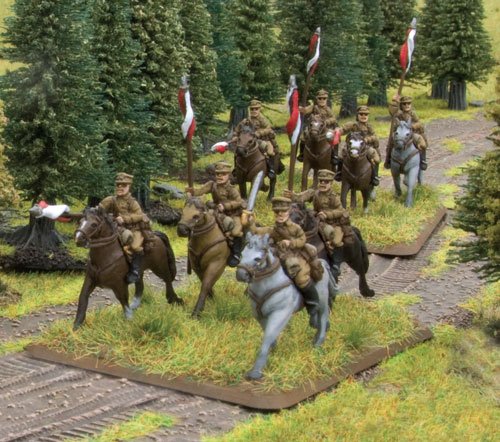 |
 |
The first two days of the war had brought hard fighting for little gain for the Germans. In most areas the Poles were still holding their assigned sectors. The cracks that were showing though, were serious. The German Panzer divisions were capable of exploiting their breakthroughs far faster than the Poles could stop them. By 3 September when the British and French finally declared war, Poland’s borders had been fatally compromised. The Polish Marshal Rydz-Śmigły needed to delay the Germans until help from his allies could arrive. To do this he needed to avoid a decisive battle and keep his army in being. General Kutrzeba commanding the as yet uncommitted Poznań Army demanded to be allowed to attack the Eighth Army in the flank, but the Marshal refused fearing that it would commit them to a trap between Fourth and Tenth Armies. Instead Rydz-Śmigły ordered a withdrawal to a new defensive line behind the Vistula River. Even this was to prove impossible. By the end of 4 September, Hoepner’s 16th Armoured Corps and the light divisions had broken through between the Łódź Army and the Kraków Army. The Polish 19th Division supported by the 2nd Tank Battalion (half of Poland’s tank force) attempted to stop them on the morning of 5 September, knocking out 17 tanks and 14 armoured cars for the loss of two tanks. Refusing to be distracted, the Panzer divisions simply outflanked and bypassed the Poles, continuing their advance.
|
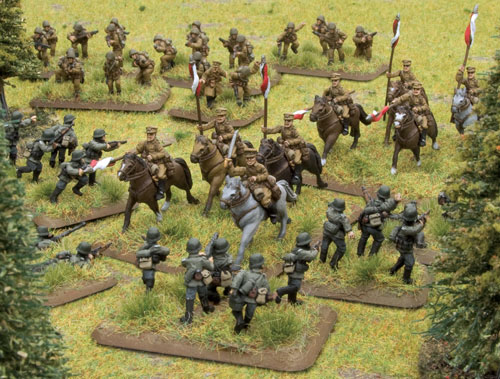 |
By the evening of 5 September, the Germans were
reassessing their plans. Aware of the need to keep a strong force in reserve to counter the anticipated French attack, the German
commanders were becoming increasingly disturbed as it became clear that the Poles were retreating across the
Vistula rather than fighting in the West where they could be encircled.
Progress everywhere was good, but a French attack combined with a
successful Polish defence of the Vistula could put Germany in the
position of fighting a two-front war. |
| The Poles were also reassessing their plans. Faced with the grim reality
of a faster than expected defeat of their border defences and motorised
spearheads advancing faster than their marching infantry could retreat,
forming a strong defensive line on the Vistula was looking increasingly
tricky. The only good news was in the north where the Modlin Army was
holding, although its counterattacks had failed. |
Want To Know More About Blitzkrieg?
Over the past few months we have added a massive range of articles
about Blitzkrieg to the website, to make it easier for people to find a
specific article we have put together this handy place.
Find out more about Blitzkrieg and Early-war here...
|
Last Updated On Friday, October 1, 2010 by Blake at Battlefront
|
|
|